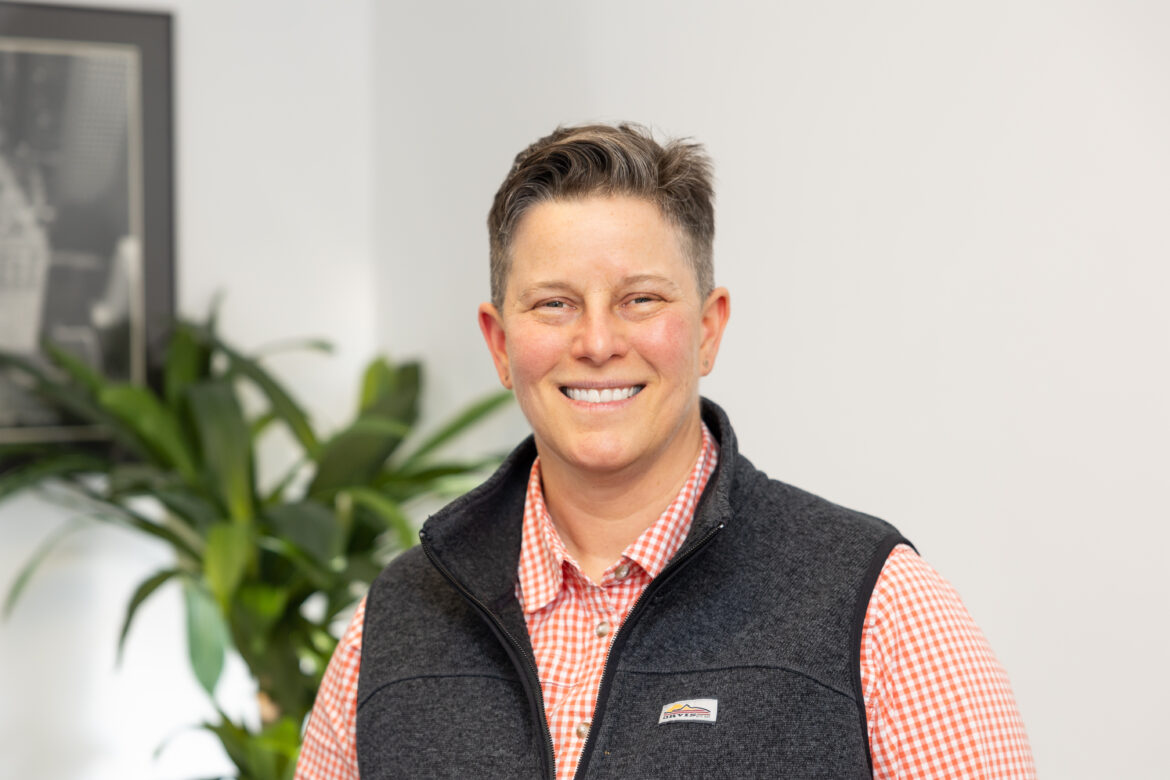Executive Director, Liz Accles, is a veteran leader and committed social justice advocate with more than thirty years of experience in fighting poverty and hunger and expanding access to federal food and income support programs to maximize their impact. Under her leadership, Community Food Advocates (CFA) has grown into a high-impact policy powerhouse.
Liz has built a small but mighty team and strategically guided the organization to become a force for lasting change – leveraging highly effective, strategic coalitions to reduce food insecurity, improve childhood nutrition across New York City and New York State, and build a more equitable, sustainable food system.
Liz’s vision brought to life the transformative Lunch 4 Learning (L4L) Campaign; building a uniquely diverse and strategic coalition – mobilizing broad community support – that became the force that secured New York City’s implementation of universal free school meals for more than 1 million students every year starting in fall 2017. Building on that success, Liz played a central role in the leadership and strategizing behind the Healthy School Meals For All (HSMFA) NY Kids campaign, using her deep expertise in policy and coalition-building to drive statewide change. Her leadership was instrumental in securing New York State’s adoption of universal free school meals for all 2.7 million public school students, set to begin in fall 2025.
In 2018, CFA expanded its work to the supply side with a focus on advancing values-based food procurement in New York City. CFA successfully pushed the City to adopt the Good Food Purchasing Program (GFPP) model – ensuring public food dollars support health, equity, sustainability, and local economy. CFA leads the statewide coalition to reform New York State’s outdated “lowest bid” contracting policy, advocating for a procurement approach that prioritizes people and the planet, not just cost.
Through her bold vision, expert strategy, and inclusive collaboration, Liz has reshaped school food policy, first in New York City and now across the entire state. Her leadership is also transforming public food purchasing into a powerful tool for social, environmental, and economic change.
Prior to joining CFA, Liz had extensive experience designing and building strategic advocacy campaigns on the City, State and Federal levels. Her successes include the Access to Assistance Campaign (a multi-faceted coalition that advocated to eliminate structural barriers to public assistance for low-income New Yorkers living in deep poverty) and the Welfare Made A Difference National Campaign (a story-telling/ social marketing and legislative action campaign to reframe the debate over social programs for poor families by engaging diverse voices of former and current welfare recipients).
Liz was educated in NYC public schools and is a graduate of Brooklyn College.
What challenges or resistance have you encountered in shifting public food procurement from lowest-cost to values-based models, and how are you navigating them?
Our biggest challenge has been that some of the largest producers and suppliers are resistant to any change at all. Our strength is our knowledgeable, deep, and cohesive coalition that represents every value area in the bill— local economies, environmental sustainability, valued workforce, health and nutrition and animal welfare, along with overarching the values of racial equity and supply chain transparency. We are all focused on moving towards public food procurement that benefits people, animals, and the planet.
New York State is poised to implement universal free school meals in 2025. What groundwork still needs to be laid between now and then to ensure success?
As with any big policy change, implementation is key to maximizing success. We need to ensure that the districts who are just now being included know what they need to do administratively and then to make sure that school communities across the entire state understand, promote and encourage students to participate in the program.
You’ve led transformative campaigns like Lunch 4 Learning and Healthy School Meals for All—what strategies have been most critical in turning bold ideas into statewide policy wins?
Focus, persistence, resilience when things don’t go the way you’d like. Flexibility and finding creative ways around barriers are essential. And working in partnership with other people and organizations with skills, knowledge, and political connections that are complementary to our own and build into a strong force for the change we are seeking.
You’ve worked across city, state, and federal levels—what’s one lesson about coalition-building you think more advocates need to hear?
I think some elements that are critical to successful coalition-building include having a clear and focused goal and sticking to it, thinking creatively about whom you bring to the table, and making sure that a range of experiences and voices are represented. When building and leading a coalition, it’s necessary to be highly collaborative while also providing clear direction and moving the group forward together. No one wants to be part of a coalition that is spinning in circles around decision-making and no one wants to be dictated to. There’s a fine balance.
Grew up: Brooklyn, NY
City or town you call home: Maplewood, NJ
Background and education: My entire education was in New York City public institutions. I spent kindergarten through 12th grade in New York City public schools. I’m a graduate of Brooklyn College and I attended the CUNY Graduate Center for two years.
One word to describe our food system: Exploitative
Food policy hero: Kathy Goldman
This morning’s breakfast: Veggie omelette
Favorite food: Pizza
Favorite last meal on earth: I am not sure what the meal would be, but I know it would end with rainbow cookies.
What is your favorite food hangout: I have many— not one. What makes a place one of my favorite food hangouts is really good food and a warm and friendly environment.
Food policy and social media must-follows: FRAC, Civil Eats


